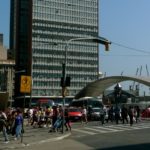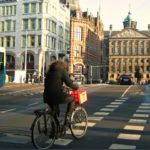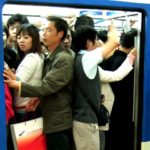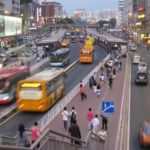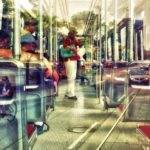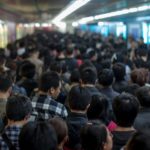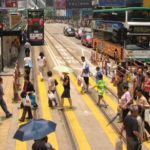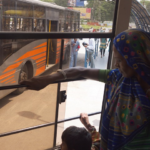Posts in the 'Integrated Transport' category
A sleek, air-conditioned vehicle picks you up at your front door. The seats recline for your comfort. You pull a shade across the window to block the sun’s glare while catching up on your favourite show, which you stream on ...

Human society has a lot riding on the transport sector. Safe, efficient, and sustainable transport not only has the potential to enhance or degrade the public spaces, health, and economic dynamism of where the majority of humanity lives – in ...

I spend a lot of time searching for photos on Flickr. As the Managing Editor of TheCityFix, it’s my job to find photos that fit our content, reflect the human component of our work, and are dynamic, colorful, interactive, transformational, ...

Google Transit has come to the southern Brazilian city of Porto Alegre. Google Transit’s introduction to developing cities like Porto Alegre provides enormous potential benefits to urban residents by allowing them to plot a course from one location to another ...

This is the ninth post of the “Sustainable Urban Transport On The Move” blog series, exclusive to TheCityFix. Preparation of this series was possible thanks to a grant by Shell Corporation. Its contents are the sole responsibility of the authors. ...

Darío Hidalgo is EMBARQ’s Director for Research and Practice, with over twenty years of experience as a transport expert, consultant, and government official. Hidalgo is a Colombian native who grew up participating in Ciclovía in Bogotá, and a frequent contributor to TheCityFix. In 1998, ...

As we discussed last week on TheCityFix, Beijing’s municipal government is currently considering a controversial proposal that would reform the city’s low subway fare structure. If approved, the proposal would raise the standard subway fare in an effort to alleviate ...

Raahgiri Day, India’s first sustained car-free day, completed its second month in Gurgaon – India’s “Millennium City” – on January 19, 2014. Although only eight weeks old, Raahgiri Day has had quite the journey since its first day in action ...

EMBARQ, the sustainable urban transport and urban development program of the World Resources Institute (WRI), and the World Bank are co-organizing Transforming Transportation on January 16 and 17 in Washington, D.C. Join the conversation on social media with hashtag #TTDC14, by following @EMBARQNetwork and @wbsustaindev on Twitter, ...

EMBARQ, the sustainable urban transport and urban development program of the World Resources Institute (WRI), and the World Bank are co-organizing Transforming Transportation on January 16 and 17 in Washington, D.C. Join the conversation on social media with hashtag #TTDC14, ...

The world is in the midst of unprecedented urbanization, with cities expected to hold 5.2 billion residents by 2050. One of the major challenges of the 21st century, therefore, is achieving a sustainable future for our cities. And transport – ...

Beijing’s subway system – one of the longest in the world at 469 kilometers (289 miles) of track – is confronted by excessive congestion and costly government subsidies. In an extremely controversial move, the city government has decided to increase ...

Cities are the world’s engines of economic growth. Yet many have a long way to go when it comes to ensuring safe and affordable access to jobs, education, and healthcare for its citizens — in part because their transport systems ...

Today’s Friday Fun brings you a colorful and cheeky animated short from the Institute for Transportation and Development Policy’s (ITDP) India office called JAM, presenting Ahmedabad’s award-winning bus rapid transit (BRT) system – the Janmarg. The film, made by Ketaki ...

This is the third post of The Bike-share Report, a new blog series on bike-sharing, exclusive to TheCityFix, from Peter Midgley – the former Urban Mobility Theme Champion for the global Transport Knowledge Partnership (gTKP) with 25 years of experience ...

Page 30 of 135« First...1020...293031...4050...Last »






